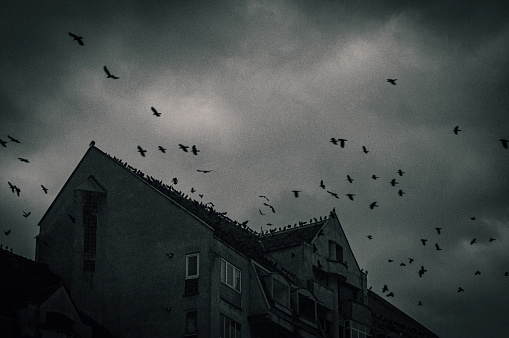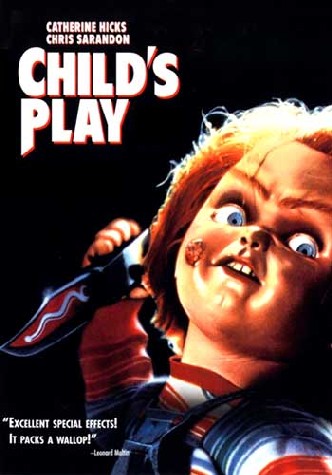Resident Evil 8 perfectly portrays five subgenres of horror

Laken Kincaid ties their love for “Resident Evil” with the various subgenres of horror.
Oct 28, 2022
In a previous article, I articulated my love for the 2021 smash hit video game “Resident Evil: Village.” Upon playing this psychological thriller series and watching multiple playthroughs of the saga online, I fell in love with the overall plot of the franchise and how the story provoked many thoughts that I never would have considered before.
A main reason I enjoy this game so much is because of my overall appreciation for horror and Halloween. As someone who previously worked at a Spirit Halloween and at a haunted trail for a few years, I not only relish this season, but I also know what assets create a good spooky story that resonates with audiences. On the trail, I was responsible for designing a character that leaves customers both terrified and intrigued, hungry for something deeper. Naturally, I became a man-eating chicken that sparks fear in the hearts of the bravest of men all while just over five feet tall, but I digress.
Through cultivating that persona, I learned about the multiple ways that an actor can scare in a haunted attraction. I researched the plethora of horror subgenres that each generate a specific kind of scare. To my surprise, upon replaying “Resident Evil: Village,” I realized that many of these categories in the world of fright eerily align with each of the interconnected boss arcs in the story. Personally, I believe that Capcom’s curation of each antagonist’s separate plots to a different subgenre of horror is not only intentional but it also made the game the monolith it is today.
Without dissecting the entire plot of the game, mostly because I already did that in an original piece, I want to examine where each of the narratives of the individual villains of the game compares to the horror subgenres I discovered as a haunted trail actor.
Castle Dimitrescu and Traditional Horror
The first main antagonists of “Resident Evil: Village” are the beautiful Lady Dimitrescu and her three blood thirsty daughters. Each of these characters mimics traditional gothic literature like that of “Dracula” by Bram Stoker, a story that evolved into the paradigm for traditional horror classification. Although it is later revealed that neither Dimitrescu nor her daughters are legitimate vampires, rather science experiments gone awry, they still play on classic elements of the oldest subgenre of horror (i.e. a gothic aesthetic and classical monsters with sexual appeal). Even Dimitrescu’s castle, one of the most stunning areas of the game’s map, plays on European gothic architecture, furthering its relation to the traditional subgenre.
While most modern media does not cater to this kind of storytelling anymore, one new example that emerged within the past month is Marvel’s “Werewolf by Midnight” which uses film noir techniques to create a more orthodox tale of dread like that of Stoker’s signature story.
House Beneviento and Creep-Out Horror

After defeating Dimitrescu’s lineage and learning more about the main protagonist, Ethan Winters, the player then voyages to a secluded corner of the village to defeat another boss. This villain, Donna Beneviento, is a deranged toy maker who has the supernatural ability to give those near her hallucinations. Through these demented visions, the player is subjected to ghostly puzzles playing on the idea of death, a huge visage of a killer fetus (meant to symbolize Ethan’s fear of never seeing his baby daughter again) and sadistic children’s toys.
Specifically looking at the presence of dolls within Beneviento’s plotline, her story relates to the creep-out subgenre of horror. Common examples of this are the “Annabelle” movies, the children singing at the end of “A Nightmare on Elm Street,” or the 2023 release “M3GAN.” This category of fear relies on appealing to the juxtaposition of putting terrifying elements into the hands of non-intimidating mediums like dolls and children. This discomfort easily translates into trepidation especially with Hollywood initially reinforcing this chilling nature in the subgenre with the 1988 movie “Child’s Play.”
Moreau’s Reservoir and Gross-Out Horror
Upon killing Donna and receiving her possessed doll, Angie, the player then ventures to a comparatively more appealing reservoir on the other side of the map. When Winters arrives at the reservoir, he finds the third antagonist, a mutated Salvatore Moreau, watching romance movies and consuming an entire block of cheese. Ironically, I lost my appetite at this scene because Moreau is truly grotesque with fish-like eyeballs and boils sprouting from his back. After the player escapes from his slimy trap inside of a mine, Moreau is seen vomiting acid until he transforms into a more ghastly beast which looks even more putrid than his original form. When the player eventually drains all of the water from the reservoir, the malformed foe attacks by spewing acid from his mouth and charging the player with disgusting sludge.
All of these factors combined father the epitome of the gross-out horror subgenre. We see this type of terror specifically with gore-based stories like “Silence of the Lambs”; Buffalo Bill creating a suit made entirely out of skin from deceased women is a prime illustration of this. Gross-out horror relies on audiences exploring the recesses of their mind, questioning where the line between the natural and unnatural lies, sending a shiver down one’s spine.
Heisenberg’s Factory and Nu Horror
After Moreau’s death and an unsuccessful bargain attempt, the player must square off with Karl Heisenberg inside his factory of death. Within this longer portion of the game, Ethan Winters must defeat an onslaught of mind controlled zombies who were built by Heisenberg to be a frightening mechanized militia. The factory is one of the largest areas of the map and is filled with a range of techno-monsters all programmed to kill the player.
This aligns closely with the nu horror subgenre which plays on society’s general fear of the future and the potential progression of artificial intelligence; people often are scared of what they can not predict. A common example of this is “The Walking Dead” which capitalizes on the general phobia of zombies and humanity’s unknown nature. Other instances includes more thriller based films like “Terminator,” “Predator” or even “2001: A Space Odyssey,” all of which question the eventual progression of technology and how it can be used against us.
Mother Miranda and Psychological Horror
Lastly, following the collapse of Heisenberg and his “metal army,” the player must face the overarching nemesis of the plot: Mother Miranda.

All of the previous villains mentioned were forged by Miranda as pawns to do her bidding, therefore each of them pale in comparison to her power. One of the reasons she is so intimidating is because her emotions are so tangible. The reason Miranda created the four lords of the village and causes the havoc she does in the first place is because she wants to revive her long dead daughter, Eva. She killed hundreds of people and started a cult just to be reunited with her family – she sold her soul to revive the person she loved most.
The reason this pairs with psychological horror is because it asks the audience, or the player in this instance, what they would do if they were in the situation the villain was in. If you had a child that died young and had the chance to bring them back, wouldn’t you? It plays on the fear that the viewer could potentially result to the same means as the antagonist if they were subjected to similar circumstances. A movie that I think best showcases this plotline, while outside the typical horror genre, is a staple psychological thriller: Darren Aronofsky’s “Black Swan.” It begs the question: if you have an opportunity to go the extra mile for success, even if it means sacrificing your sanity, would you? The reasons these stories impact us the most is because the fear does not lie in what the villain does but rather what we see as the mirror is held to our own behaviors.
With the release of “Resident Evil: Village Gold Edition” and a new expansion to the game on Oct. 28, I can not wait to see how this chronicle advances and how its writers will continue to grab the attention of terror fanatics like myself.












